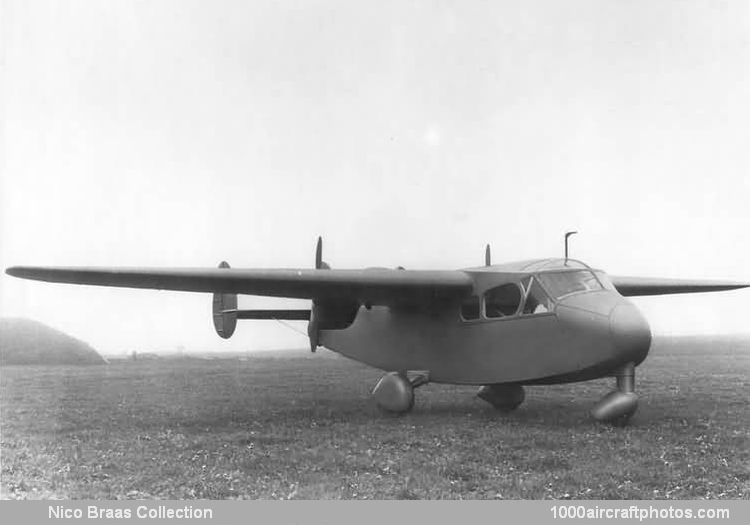Type: Twin-pusher four-seat cabin monoplane.
Wings: High-wing cantilever monoplane. Wing in one piece. Wood two-spar construction with plywood covering. Slotted ailerons of welded steel-tube with fabric covering. Wooden landing-flaps of Schrenck type between ailerons and engine-mountings.
Fuselage: Rectangular structure of welded steel-tube, the nose and cabin portion covered with plywood and the remainder with fabric.
Tail unit: Monoplane type, with twin fins and rudders. Tail plane and fins of wood with plywood covering. Rudders have wood frames with fabric covering. Elevators have welded steel-tube frames and fabric covering. Trimming-tabs in elevators.
Landing gear: Single-strut cantilever type with oleo-pneumatic shock-absorber units inside fuselage. Praga Elektron wheels and Dunlop brakes. Initially an orientable tail wheel with compression-rubber springing.
Power plant: Two 85/95 hp Walter Minor I four-cylinder air-cooled inverted in-line engines on welded steel-tube mountings cantilevered from the rear spar and driving pusher airscrews. One common fuel tank in the center portion of the wing. Oil tanks in engine nacelles.
Accommodation: Enclosed cabin for four seated in two pairs, with dual controls to the front seats. Large baggage compartment behind cabin, with access from within.
